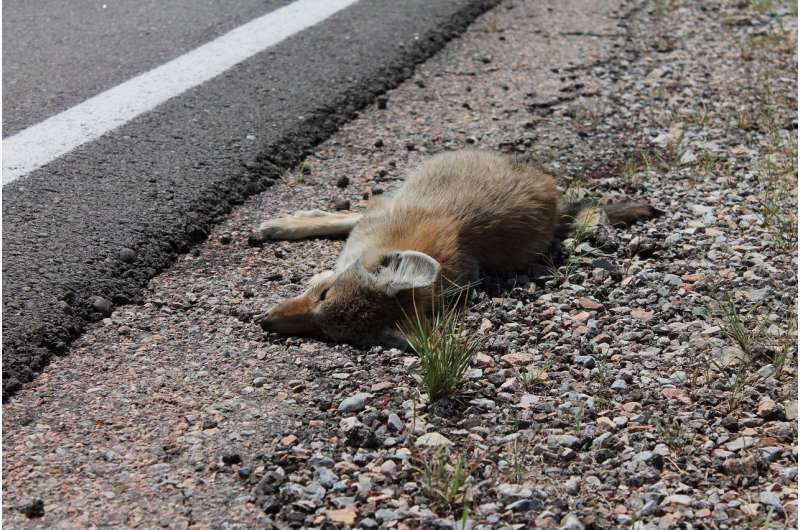This article has been reviewed according to Science X's editorial process and policies. Editors have highlighted the following attributes while ensuring the content's credibility:
fact-checked
reputable news agency
proofread
Study of New Jersey roadkill looks at how wildlife moves, or doesn't move, around the Garden State

New Jersey is the nation's most densely populated state, packed with 9.2 million people from High Point to Cape May Point. It's not the easiest place for wild animals to cross the road.
A recently finished five-year study by the NJDEP Fish & Wildlife's Connecting Habitat Across New Jersey looked at 1,669 DNA samples collected from 33 different native mammal species across the state. Some samples were taken from roadkill, others from legally harvested animals. The study, conducted by 100 volunteers armed with scissors, test tubes and rubber gloves that New Jersey's prolific development—highways, roads, strip malls—inhibits their ability to disperse, to spread their genes.
"We hypothesize that carnivores like coyotes and bobcats may be having the hardest time because of their large area requirements compared to other animals. But landscape 'resistance' appears to be an issue for species with smaller home ranges too, including woodchucks and Eastern cottontails (rabbits)," the study's authors wrote.
Bobcats, the study found, exist almost exclusively in the northwestern top of the state, where there's more forest and mountain terrain. Animals like raccoons, red fox and white-tailed deer were more widespread. For eastern coyotes, the study found Route 1, which cuts east to west to across the state, acts as a barrier to breeding and spreading the gene pool. Animals on other either side of the road are more closely related than animals on the other side.
Deer, squirrels and raccoons, however, have adapted, and their genetics are less impacted by the state's density. They sometimes eat trash and nest in attics, perfectly at home among humans in both urban and suburban settings.
The opossum, the study found, is the least affected, a true New Jerseyan that rolls with the punches. The authors say opossums taught them a new word: panmixia, "meaning their genetics are similar all across the state, uninfluenced even by physical distance."
Changing the New Jersey landscape to accommodate animal travel, according to CAHNJ, can include wildlife "tunnels" that allow turtles, salamanders and toads to cross from one wetland to another. While wildlife "overpasses" have become more common out West, used by elk, bear and other large animals, some of the first were built in New Jersey's Watchung Reservation.
Some studies have found that animals are still wary of using them. Bobcats in particular need room to roam and as an endangered species in New Jersey, have gotten quite a bit of attention. They'll often roam up to seven miles a day, according to the Nature Conservancy, and will spread out to Pennsylvania and New York, then come back. The Nature Conservancy has created "Bobcat Alley," a 400,000 acre corridor spanning two mountain ranges in Northern New Jersey that are key to the feline's habitat.
Some have estimated New Jersey's bobcat population at around 100. There are no hard numbers on the state's opossum population but they can have up to two dozen babies at one time.
2023 The Philadelphia Inquirer.
Distributed by Tribune Content Agency, LLC.




















